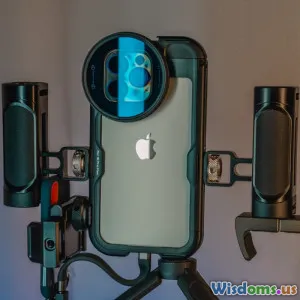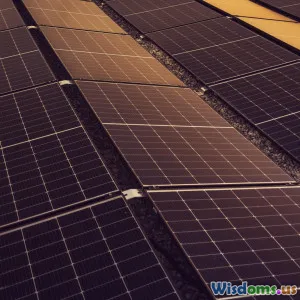
Why 8K Video Might Not Be Worth the Hype Yet
8 min read Explore why 8K video tech isn't practical yet despite its buzz in photography and filmmaking. (0 Reviews)
Why 8K Video Might Not Be Worth the Hype Yet
The world of photography and filmmaking is no stranger to technological leaps that promise to revolutionize how visual stories are told. Most recently, 8K video has emerged as the next big buzzword, with manufacturers and early adopters touting its stunning resolution capable of delivering images four times sharper than 4K. It paints an alluring picture: crystal-clear footage, immense digital flexibility, and future-proof content. However, beneath this glossy sheen lie compelling reasons why 8K video, despite its hype, isn’t yet the game-changer many believe it to be.
The Allure of 8K: What’s Behind the Buzz?
Before dissecting the drawbacks, it’s critical to understand the appeal of 8K. An 8K video has a resolution of approximately 7680 × 4320 pixels — over 33 million pixels per frame. This translates to:
- Exceptional Detail: Fine textures like hair strands or foliage can appear near photographic in clarity.
- Editing Freedom: The extra pixels allow for significant cropping, re-framing, or stabilization in post-production without quality loss.
- Future-Proofing Content: As 8K TVs slowly enter the market, shooting in 8K means footage will look good on future displays.
It’s no surprise that filmmakers, especially those focused on AR/VR or high-end commercials, see a potential advantage in 8K workflows.
The Technical Hurdles
Monstrous Data & Storage Demands
One of the most immediate and significant challenges with 8K video is data management. Compared to 4K, 8K’s data throughput demands are approximately four times higher due to the pixel count.
- File Sizes: A one-minute 8K ProRes HQ clip can easily measure tens of gigabytes, demanding uncompromising fast storage solutions.
- Hardware Requirements: Handling, editing, and backing up these files require top-tier computers, SSDs with very high write speeds, and substantial storage space — factors that significantly increase production costs.
An independent filmmaker with a modest budget may find managing these files impractical. Even industry giants report workflow slowdowns and bottlenecks working with native 8K RAW footage.
Limited Display Compatibility
Another limitation is the scarcity and expense of displays capable of showcasing 8K content natively. Although 8K TVs exist, they remain prohibitively costly for most consumers, and streaming services have yet to adopt widespread 8K video delivery due to bandwidth constraints.
Physical screenings — film or digital — and even many contemporary monitors max out at 4K resolutions. The advantage of capturing 8K is often lost if the final viewer cannot experience the enhanced detail.
Compression Challenges and Bandwidth
Streaming or broadcasting 8K video requires significantly more bandwidth than 4K. Services like YouTube and Netflix compress video streams heavily, which can counteract the benefits of shooting in native 8K, resulting in footage that looks similar to downscaled 4K.
This compression can also introduce artifacts and degrade video quality, questioning whether the higher resolution justifies all the extra resources.
Practical Filmmaking Concerns
Visual Perception Limitations
It’s crucial to note that the human eye can only discern so much detail at normal viewing distances and screen sizes. Research indicates that the perceptible difference between 4K and 8K is marginal unless viewers sit extremely close or watch on very large screens.
For example, the SMPTE (Society of Motion Picture and Television Engineers) suggests a viewing distance of about 1.5 times the vertical screen size allows the average viewer to perceive the full detail — a condition rarely met in typical viewing scenarios.
Therefore, the practical enhancement for most audiences might be minimal, raising questions about whether the increased effort and cost are justified.
Workflow Complexity and Post-Production
Handling 8K footage demands more than just hardware power; it also affects workflows:
- Extended Render Times: Editing and effects take substantially longer.
- Software Compatibility: Not all editing suites are optimized for 8K video, especially when dealing with RAW footage or high bit-depth formats.
- Storage Backup and Archiving: Long-term digital preservation becomes more logistically challenging and expensive.
These complexities impact efficiency and timeline, particularly for fast-turnaround projects.
When Does 8K Actually Make Sense?
While 8K might not yet be practical for everyday filmmakers, there are niche areas where it shines:
- High-Budget Productions: Studios and directors with ample resources and ambitious projects that benefit from extreme resolution for VFX or immersive experiences.
- Large-Scale Outdoor Screenings: Ultra-high-resolution footage is beneficial for massive event screens where pixel density matters.
- Archival and Restoration: Digitizing historical films or creating archival-quality masters where preserving every pixel aids future-proofing.
The Future of 8K: Potential and Progress
As technology advances, many current obstacles may diminish:
- Storage costs continue to drop.
- Editing software is increasingly optimized for high-res workflows.
- Display technologies might become more affordable and widespread.
Additionally, future distribution platforms could natively support 8K streaming with improved bandwidth.
However, these changes will take years to mainstream. The current generation of filmmakers should weigh costs, needs, and audience benefit carefully before jumping into 8K adoption.
Conclusion: Is 8K Worth It Yet?
In summary, while 8K video holds undeniable potential from a resolution perspective, its practical drawbacks are considerable. The excessive hardware demands, limited consumer display access, significant workflow complications, and questionable visible improvements to the average viewer caution against rushing headfirst into 8K production.
Rather than treating 8K as an essential upgrade, filmmakers and photographers should approach it strategically — leveraging 8K’s benefits where it fits the project, budget, and audience, rather than chasing hype. Ultimately, mastering lighting, composition, storytelling, and creative vision will always make a film shine far brighter than any resolution number.
The technology will mature and become more accessible in time. But for today, 4K remains the sweet spot for most creators balancing quality, cost, and practicality.
Rate the Post
User Reviews
Popular Posts





















